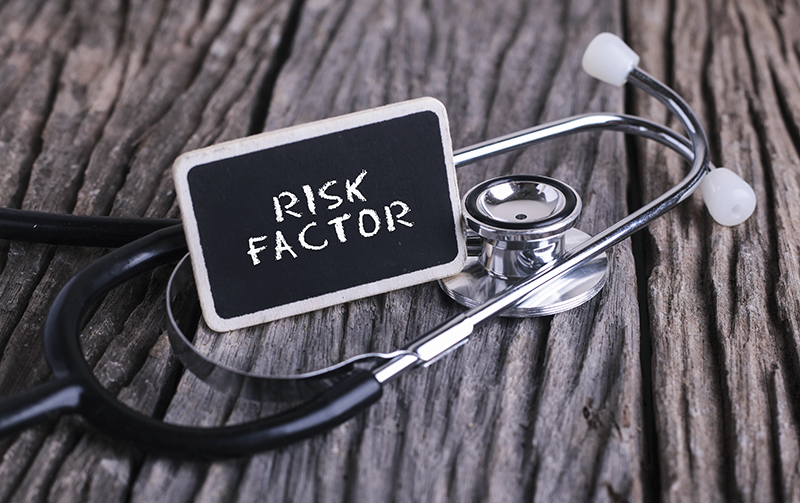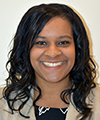
Only a fraction of women and men are aware that their family history of cancer increases their own risk for cancer. Even fewer realize high risk screening is available to help them prevent cancer or find cancer when it is small and easiest to treat.
It is estimated that 10 percent of people have a hereditary risk for cancer. This means a person was born with a risk for one or more cancers.
Which cancers are concerning for hereditary risk?
The majority of cancers are considered sporadic (happen by chance) and not hereditary.
However, breast, ovarian, uterine/endometrial, prostate, pancreatic, melanoma and cancers of the gastrointestinal tract (stomach, colon, rectum etc.) can be hereditary.
Ovarian cancer and male breast cancer are rare cancers and automatic reasons to consider genetic testing. Triple negative breast cancer is also rare and if it occurs at age 60 or younger, it is also a reason to test.
Families with a combination of these cancers or any of these cancers at a young age (under 50) may want to consider genetic testing. High risk screening for cancers may also be recommended. This could include starting mammograms younger than age 40 and doing a yearly Breast MRI (in addition to mammogram) for breast cancer detection. Families with gastrointestinal cancers may need to start colonoscopy screening prior to age 50 and/or complete this procedure sooner than every 10 years.
What is a hereditary cancer syndrome?
Having a hereditary cancer syndrome means you have a mutation (a rare change) in your DNA that puts you at risk for multiple cancers over your lifetime. This also means that you inherited this mutation from your mother or father. Your children, brothers, sisters, aunts, uncles and cousins may also have the same mutation since you all share similar DNA.
The most common syndromes include Hereditary Breast and Ovarian Cancer Syndrome and Lynch Syndrome.
What is new with testing?
A few years ago, it was common practice to only be tested for two genes (BRCA1, BRCA2) if there was breast or ovarian cancer in the family. Now, testing for multiple genes (panel test) is a standard practice. Only testing for two genes means other mutations can be missed.
If you or a family member was tested prior to 2014 or only tested for two genes, updated panel testing is recommended.
Breast cancer risk
Screening with a mammogram starting at age 40-45 is recommended. Women who have a known genetic risk for breast cancer or have a family member with breast cancer under the age of 50 may need to start sooner.
Women who have had radiation to the chest as children, have a family history of ovarian cancer, or who have had an abnormal breast biopsy are also at an increased risk for breast cancer. In these cases, high risk screening may be an option.
Should men be tested?
Testing for men who have a family history of breast, ovarian or uterine/endometrial cancer may be indicated. It is a common misconception that “female cancers” (breast, ovarian and uterine/endometrial) in the family do not affect men. Several mutations with a breast cancer risk also have a prostate, colon or pancreatic cancer risk. Men carry these mutations at the same rates as women and they can pass these risks onto their male and female children. Although it is rare, men can have breast cancer.
Why do some people with mutations have cancer and others do not?
Being born with a risk for cancer means you have a probability, not a guarantee, of having cancer. You can have a mutation and never have cancer. It may look like a mutation “skipped” a generation in the family, but that is not possible. For example, BRCA1 carries an 87 percent chance of breast cancer in women. This means that 13 percent of women with a BRCA1 mutation will never have breast cancer. However, their children or grandchildren may develop cancer.
What happens if you test positive for a mutation?
A positive result (mutation) does not mean you will develop cancer. Knowing that you were born with a risk for cancer gives you the opportunity to prevent cancer and start screening to find cancer at an early stage. Mutations are a family affair and your results impact your relatives. Knowing could save your life and the lives of the ones you love.
Is testing covered by insurance?
If there are concerning cancers in the family, most insurance companies cover the cost of testing at 100 percent. If there is a known mutation in the family, testing of that specific mutation is often far less expensive than testing multiple genes.
If you have a personal and/or family history of certain cancers, consider seeing a healthcare provider who can help you understand your cancer risk and discuss ways to reduce your risk.
Early detection saves lives.
Valley’s High-Risk Screening and Genetics Clinic
At Valley, the High-Risk Screening & Genetics Clinic is dedicated to identifying families at risk for cancer and helping families engage in prevention and early detection.
L’Oreal Kennedy is a nurse practitioner who facilitates the high-risk screening program. Women who are considered high risk for breast cancer see her twice a year for a physical breast exam and discussion about reducing their risk. The high-risk screening clinic is a one stop shop for breast health where patients can create a customized cancer screening plan.
Dr. Kristine King runs the genetics arm of the clinic and mainly sees patients who are not currently considered high risk for breast cancer, including survivors, men, and patients who are newly diagnosed.
If you want to make an appointment or have questions, please call 425.656.5062 for more information.
 By L’Oreal Kennedy, ARNP, High Risk Screening and Genetics Clinic
By L’Oreal Kennedy, ARNP, High Risk Screening and Genetics Clinic

